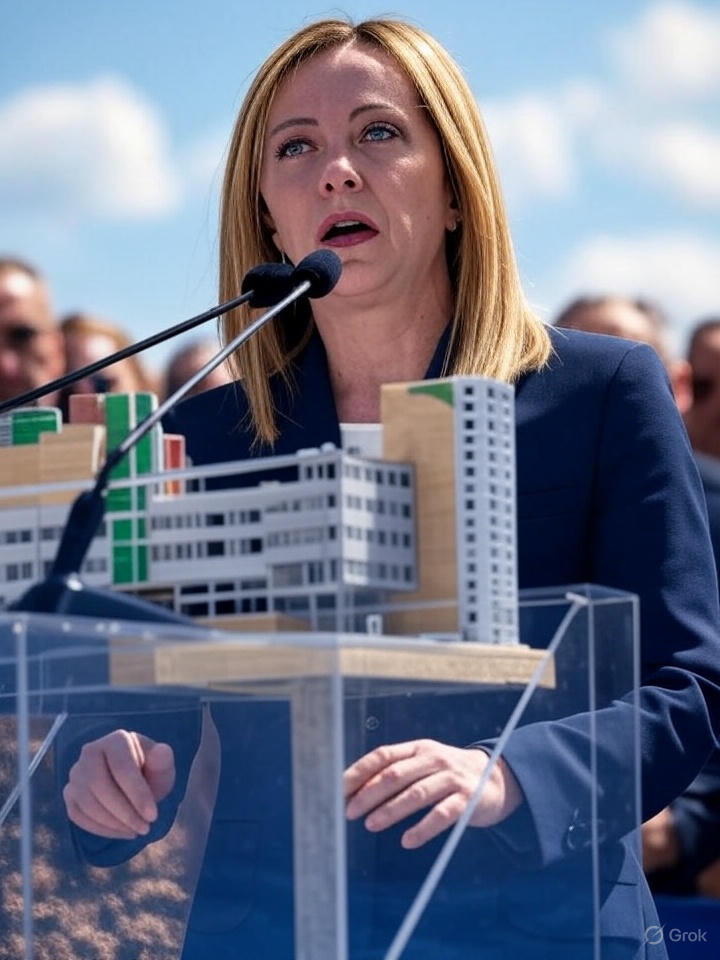Italy’s government has unveiled a comprehensive national plan for public works and infrastructure development, aimed at modernizing transportation networks, energy systems, and urban facilities across the country. The initiative, led by Prime Minister Giorgia Meloni’s administration, allocates substantial resources to projects that enhance connectivity and economic productivity. Key components include the expansion of high-speed rail lines connecting major cities like Milan, Rome, and Naples, with investments exceeding €50 billion over the coming years. This builds on existing frameworks such as the National Recovery and Resilience Plan, integrating European Union funding to accelerate implementation. The plan emphasizes sustainable construction practices, incorporating advanced materials and digital monitoring to ensure durability and efficiency. Infrastructure Minister Matteo Salvini presented the details during a public announcement, outlining partnerships with private sector entities to leverage expertise in engineering and financing. The strategy prioritizes regions with high growth potential, including southern Italy, where new highways and port upgrades are slated to improve logistics and trade flows. Energy infrastructure receives focused attention, with upgrades to grid systems to support renewable integration and reduce transmission losses. Urban renewal projects target historic centers, restoring public spaces while installing modern amenities like smart lighting and accessible pathways. The government has established oversight committees comprising regional representatives to coordinate efforts and address local needs, ensuring equitable distribution of benefits. Implementation begins with pilot projects in select provinces, where feasibility studies have already identified optimal routes and timelines. Private investments are incentivized through tax credits and streamlined permitting processes, drawing interest from international firms specializing in tunneling and bridge construction. The plan’s design incorporates public input mechanisms, including online portals for citizen feedback, which have informed adjustments to prioritize environmental safeguards and community integration. Engineering teams are deploying innovative technologies, such as AI for project management and drone surveys for site assessments, to optimize resource use and minimize delays. Outcomes from this initiative include projected job creation, with estimates of over 100,000 positions in construction, engineering, and related fields during the peak phases. Economic analyses from the Ministry of Economy forecast a 1.5 percent boost to GDP through improved infrastructure efficiency, facilitating smoother goods movement and tourism access. Regional disparities are addressed through targeted funding, with southern areas receiving 40 percent of allocations to stimulate local industries. Early successes in pilot zones demonstrate reduced commute times by up to 30 percent on upgraded routes, enhancing daily life for commuters and businesses alike. The public works plan also strengthens Italy’s position within the European Union, aligning with collective goals for resilient infrastructure. Collaborative agreements with neighboring countries focus on cross-border rail links, promoting seamless travel and commerce. Educational components integrate vocational training programs, partnering with technical institutes to prepare a skilled workforce for specialized roles. Financial transparency is upheld through annual reporting to parliament, detailing progress metrics and expenditure breakdowns. Furthermore, the initiative supports broader economic recovery by linking infrastructure to innovation hubs, such as tech parks in Lombardy and research centers in Tuscany. These developments foster entrepreneurship, with startup incubators benefiting from enhanced connectivity. Environmental monitoring ensures compliance with EU standards, resulting in certifications for green building practices across projects. Stakeholder engagement has led to community-led designs in several municipalities, incorporating local heritage elements into modern structures. As the plan rolls out, monitoring dashboards provide real-time updates, allowing for adaptive management based on performance data. This proactive approach has garnered endorsements from business associations, who highlight the potential for sustained growth. Italy’s commitment to this vision positions it as a leader in European infrastructure renewal, driving progress that benefits generations through reliable, forward-thinking systems.
www.34news.online
www.34news.online

